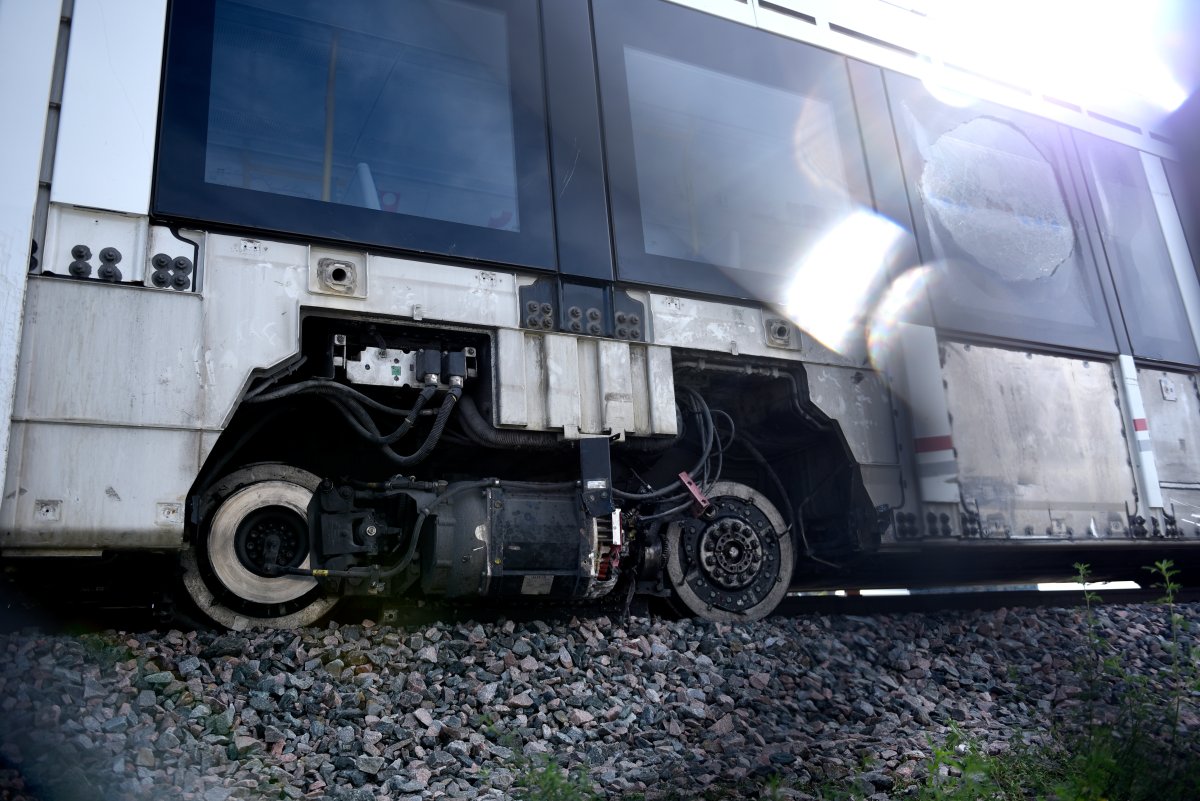Repair work to address the August derailment on Ottawa’s light-rail transit system missed tightening bolts on one of the trains, leading to a second derailment six weeks later, according to a letter released Thursday from the Transportation Safety Board of Canada (TSB).

The TSB called the latest incident, which saw a light-rail train derail at Tremblay Station with a dozen passengers on board on Sept. 19, a demonstration of “serious consequences resulting from the inconsistent and incomplete maintenance on safety-critical components.”
The train that derailed in September, LRV 1121, had recently been taken out of service following the derailment in August, when a different train became stalled near Tunney’s Pasture.
An investigation of the fleet then discovered nine other trains needed to be inspected and possibly repaired. LRV 1121 was one of those trains.
Employees with Texelis, a subcontractor for Rideau Transit Group, removed two of the train’s motor bogies as part of the refurbishment.
Workers with Alstom, the maker of the Citadis Spirit train model used on Ottawa’s Confederation Line, then had to reassemble the bogies and torque the bolts securing the equipment.

Get daily National news
When the late shift finished its work in the shop at 11 p.m. on Saturday, Sept. 9, the staff didn’t realize a set of 12 bolts hadn’t been adequately torqued. The morning shift came in the next day and also didn’t know there were any issues with the bolts.
LRV 1121 was released from the shop on Sept. 13 and put back into service the next day.
It derailed five days later when all 12 bolts on the axle failed, the TSB said.
The TSB report outlined a series of checks and balances that should have been in place during the refurbishment process and pointed to gaps in oversight and workflows that increased the risk of negligence in the repairs.
The agency said that workflow requirements that were in place sometimes required information that wasn’t readily available, which could lead to workers cutting corners in signing off on work. For example, the work order for LRV 1121 wasn’t on-hand during some of the repairs, so a different train’s order was scanned instead.
“At the time the work was performed, it was reported that there was also minimal supervisory and/or quality control personnel oversight of the refurbishment work performed. Although the wheel torques were recorded on paper, there were no such records for any other component with torqueing requirements and no supervisory or quality control sign-off was required,” the TSB wrote.
The agency added that each step in the repair process should be documented and verified before moving to the next one, and that “this is particularly important when a job is started by one work shift and handed off to another.”
Mario Guerra, CEO of RTG’s maintenance arm, also said earlier this month that “workmanship” was to blame for the most recent derailment.
In a memo accompanying the rail safety letter, city manager Steve Kanellakos said the city agrees with the TSB’s assessment and that it aligns with initial findings from the independent rail safety advisor, TRA.
TRA will hold a technical briefing with Ottawa city councillors and reporters on Friday to outline their initial findings overseeing RTG’s return-to-service plan, which expects to see passengers back on the LRT system in the first two weeks of November.



_848x480_1397405763961.jpg?h=360&w=540&crop=1&quality=70&strip=all)



Comments